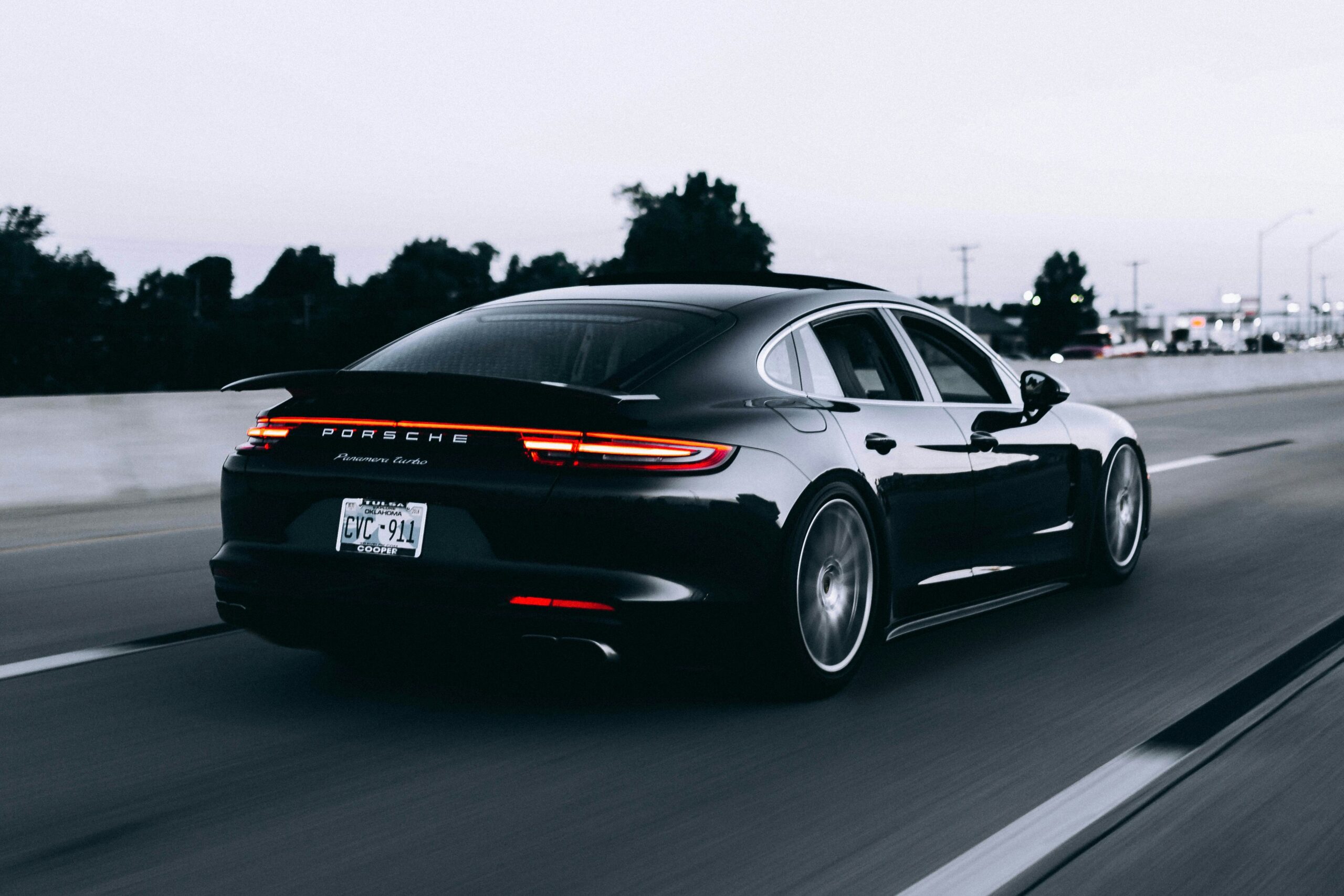When it comes to choosing between a minivan and an SUV, most families focus on space, comfort, and performance. But there’s another important factor that can save — or cost — you hundreds of dollars each year: car insurance rates.
While minivans and SUVs share many similarities in function and size, insurance companies treat them quite differently. If you’re wondering which one will give you the best balance of safety, practicality, and affordability, you’re in the right place.
In this guide, we’ll break down the differences in minivan vs SUV car insurance rates, what drives those differences, and how you can save money regardless of which vehicle you choose.
Table of Contents
-
What Affects Car Insurance Rates in General?
-
Minivan vs SUV: The Big Picture
-
Average Insurance Costs for Minivans
-
Average Insurance Costs for SUVs
-
Why Minivans Usually Cost Less to Insure
-
When SUVs Can Be Cheaper to Insure
-
Safety Ratings and Insurance Impact
-
Repair and Replacement Costs
-
Usage and Driver Profile
-
Top 5 Cheapest Minivans to Insure
-
Top 5 Cheapest SUVs to Insure
-
Tips to Lower Your Insurance Premium
-
The Verdict: Minivan vs SUV Car Insurance Rates
-
Final Thoughts
1. What Affects Car Insurance Rates in General?
Before comparing minivan vs SUV car insurance rates, it’s important to understand what insurance companies look at when setting your premium.
Insurers analyze risk — how likely you are to file a claim and how expensive that claim might be. The main factors include:
-
Vehicle type and model
-
Repair and replacement costs
-
Safety ratings and crash test performance
-
Driver’s age, gender, and experience
-
Driving record and claims history
-
Location (state, ZIP code, and urban/rural setting)
-
Annual mileage and vehicle usage
-
Credit score (in most U.S. states)
Even if two vehicles cost the same at the dealership, their insurance costs may differ by hundreds of dollars due to their risk profile and safety records.
2. Minivan vs SUV: The Big Picture
Both minivans and SUVs are popular family vehicles — spacious, comfortable, and safe. But, insurance companies categorize them differently.
| Vehicle Type | Typical Use | Vehicle Category | Risk Profile | Average Insurance Cost |
|---|---|---|---|---|
| Minivan | Family transportation | Low-risk, family-oriented | Low to moderate | Lower premiums |
| SUV | Family + adventure vehicle | Moderate to high risk | Moderate to high | Higher premiums |
In short, insurers tend to see minivans as safer, lower-risk vehicles — often used by cautious, family-oriented drivers. SUVs, on the other hand, are viewed as more versatile, powerful, and often driven in higher-risk conditions (like off-road or high-speed highways).
3. Average Insurance Costs for Minivans
Minivans are among the most affordable vehicles to insure in the U.S. That’s because they have excellent safety ratings, lower accident rates, and are generally driven by families rather than young thrill-seekers.
Here’s a look at the average annual insurance cost for popular minivans (2025 national average, full coverage):
| Minivan Model | Average Annual Premium |
|---|---|
| Honda Odyssey | $1,400 |
| Toyota Sienna | $1,480 |
| Chrysler Pacifica | $1,550 |
| Kia Carnival | $1,520 |
| Dodge Grand Caravan | $1,600 |
👉 Average minivan insurance rate (all models): $1,510/year
That’s typically 20–30% cheaper than comparable SUVs of the same size and price.
4. Average Insurance Costs for SUVs
SUVs, on the other hand, come in many categories — from compact crossovers to large luxury models. Because of their higher horsepower, repair costs, and theft rates, SUVs generally cost more to insure.
Here’s what you can expect for average annual SUV insurance rates:
| SUV Model | Average Annual Premium |
|---|---|
| Toyota RAV4 | $1,620 |
| Honda CR-V | $1,580 |
| Ford Explorer | $1,780 |
| Jeep Grand Cherokee | $1,900 |
| Chevrolet Tahoe | $2,050 |
| BMW X5 | $2,350 |
👉 Average SUV insurance rate (all models): $1,880/year
That’s roughly $370 more per year than a typical minivan — or about $30 more per month.
5. Why Minivans Usually Cost Less to Insure
Insurance companies base rates on data. Decades of statistics show that minivan drivers file fewer and less severe insurance claims than SUV drivers. Let’s break down the key reasons.
5.1. Driver Demographics
Minivans are mostly driven by families — parents with children, commuters, or older adults. These drivers typically have:
-
Better driving records
-
Lower accident rates
-
Fewer speeding violations
SUVs, in contrast, are popular among a wider range of drivers, including younger and more aggressive ones.
5.2. Safety Ratings
Minivans consistently score high in crash tests and occupant protection. The Insurance Institute for Highway Safety (IIHS) rates several models like the Honda Odyssey and Toyota Sienna as Top Safety Picks.
5.3. Lower Repair and Replacement Costs
Minivans have simpler designs and less expensive parts than high-tech SUVs, which often include advanced off-road systems or performance components.
5.4. Lower Theft Rates
Thieves typically target SUVs more often because of their resale value, popularity, and high-end models. Minivans rarely make it onto “most stolen cars” lists.
5.5. Family-Oriented Usage
Minivans are rarely driven recklessly or in hazardous conditions. Insurers take that into account when calculating risk.
6. When SUVs Can Be Cheaper to Insure
While minivans are generally cheaper to insure, there are some cases where an SUV can have lower premiums.
6.1. Compact SUVs and Crossovers
Smaller SUVs like the Honda CR-V, Subaru Forester, or Mazda CX-5 often have insurance costs similar to — or even lower than — some minivans. That’s because they’re built on car platforms (not truck-based), have lower repair costs, and are used as commuter vehicles.
6.2. Superior Safety Technology
Newer SUVs often come with advanced driver-assistance systems (ADAS) such as:
-
Collision mitigation braking
-
Lane-keeping assist
-
Adaptive cruise control These can lower insurance rates if they reduce accident risk.
6.3. Driver Profile
If the SUV owner has an excellent driving record, good credit, and safe driving habits, insurers may offer lower premiums than for a high-risk minivan driver.
7. Safety Ratings and Insurance Impact
Safety ratings directly influence minivan vs SUV car insurance rates. Vehicles that perform well in crash tests and offer advanced safety systems usually earn lower premiums.
7.1. Top-Rated Minivans for Safety (2025)
-
Honda Odyssey – 5-star NHTSA safety rating
-
Toyota Sienna – IIHS Top Safety Pick+
-
Kia Carnival – Excellent frontal and side-impact performance
7.2. Top-Rated SUVs for Safety (2025)
-
Subaru Forester – Top Safety Pick+
-
Mazda CX-5 – Consistently top-rated for crash avoidance
-
Hyundai Tucson – Great crash test results and driver aids
Despite improvements in SUV safety, minivans maintain a lower overall claim rate, especially for personal injury and property damage.
8. Repair and Replacement Costs
Another big factor that separates minivan vs SUV insurance rates is repair cost.
-
SUV parts (like bumpers, suspension systems, and electronics) tend to be more complex and expensive.
-
Minivans often share platforms and parts with sedans, reducing replacement costs.
For example, replacing an SUV’s adaptive headlight or bumper sensor can cost $1,200–$2,000, while a minivan’s repair for the same area might cost half that.
This difference means insurers must set higher premiums to cover potential claim expenses.
9. Usage and Driver Profile
Insurance rates depend heavily on how you use your vehicle.
-
Minivans are typically family transport vehicles used for school runs, grocery trips, and commutes — mostly short, predictable drives.
-
SUVs, however, are often used for road trips, towing, off-roading, or long-distance travel — all of which increase mileage and risk.
Additionally, minivans are mostly driven by mature drivers, while SUVs appeal to a broader range, including younger drivers — statistically more likely to be involved in accidents.
10. Top 5 Cheapest Minivans to Insure in 2025
| Rank | Model | Annual Insurance Cost |
|---|---|---|
| 1 | Honda Odyssey | $1,400 |
| 2 | Toyota Sienna | $1,480 |
| 3 | Kia Carnival | $1,520 |
| 4 | Chrysler Pacifica | $1,550 |
| 5 | Dodge Grand Caravan | $1,600 |
The Honda Odyssey continues to dominate the minivan insurance value category due to its exceptional safety record and low repair costs.
11. Top 5 Cheapest SUVs to Insure in 2025
| Rank | Model | Annual Insurance Cost |
|---|---|---|
| 1 | Subaru Forester | $1,500 |
| 2 | Honda CR-V | $1,580 |
| 3 | Mazda CX-5 | $1,590 |
| 4 | Toyota RAV4 | $1,620 |
| 5 | Hyundai Tucson | $1,650 |
Compact crossovers remain the best insurance bargains in the SUV category, proving that size and safety technology can help narrow the cost gap with minivans.
12. Tips to Lower Your Insurance Premium (For Both Minivans and SUVs)
Regardless of what you drive, there are effective strategies to cut costs:
✅ Bundle Your Policies
Combine home, renters, or life insurance with your auto policy for a 10–25% discount.
✅ Increase Your Deductible
Opt for a higher deductible ($1,000 instead of $500) to lower monthly premiums.
✅ Install Safety and Anti-Theft Devices
Dash cams, alarms, and tracking devices can reduce theft risk and earn discounts.
✅ Drive Fewer Miles
Low annual mileage = lower risk = cheaper insurance. Ask about usage-based programs like Progressive’s Snapshot or Nationwide’s SmartMiles.
✅ Maintain a Clean Driving Record
Avoid tickets and claims. Insurers reward safe drivers with discounts after a few years of clean driving.
✅ Improve Your Credit Score
A good credit score (above 700) can significantly lower your premium in most U.S. states.
✅ Compare Many Quotes
Always get at least 3–5 quotes before purchasing or renewing your policy. Different insurers value risk differently.
13. The Verdict: Minivan vs SUV Car Insurance Rates
So, which is cheaper to insure — a minivan or an SUV?
| Category | Winner | Reason |
|---|---|---|
| Overall Premium | ✅ Minivan | Lower accident and theft rates |
| Safety Ratings | ✅ Minivan | Excellent family-focused designs |
| Repair Costs | ✅ Minivan | Cheaper parts and maintenance |
| Driver Demographics | ✅ Minivan | Driven by cautious, mature drivers |
| Performance & Power | 🚗 SUV | Better power and towing, but costlier insurance |
| Resale Value | 🚗 SUV | Holds value longer but more expensive to insure |
👉 Final Verdict: Minivans typically cost 20–30% less to insure than SUVs with similar price tags.
However, if you choose a compact SUV with great safety features, your insurance costs can be close to — or even equal to — those of a minivan.
14. Final Thoughts
Both minivans and SUVs are excellent choices for families, commuters, and adventure-seekers. But when it comes to insurance, minivans are the clear budget-friendly winner.
They cost less to insure because they’re safer, simpler to repair, and statistically less involved in serious accidents. That said, modern compact SUVs are closing the gap fast with advanced safety technology and better crash protection.
If you’re torn between the two:
-
Choose a minivan for maximum value and lower insurance bills.
-
Choose an SUV for versatility, performance, and higher resale value — just be ready for slightly higher premiums.
Either way, always compare quotes, ask about discounts, and consider your driving habits before deciding. The right policy can make a big difference in your annual expenses.



